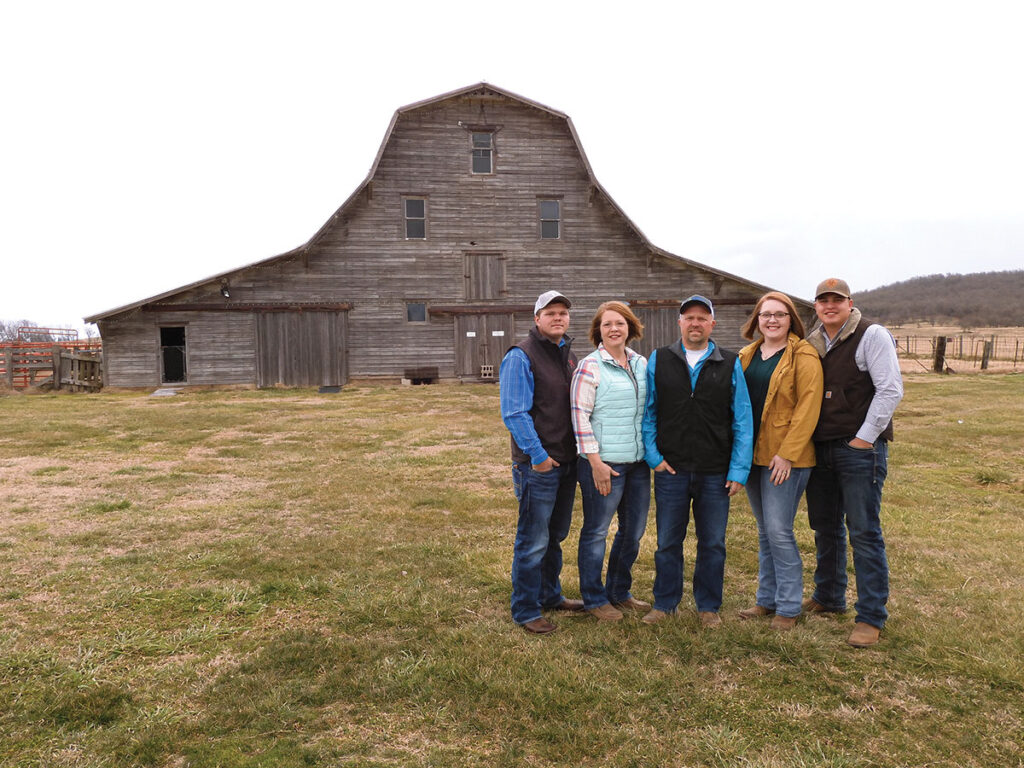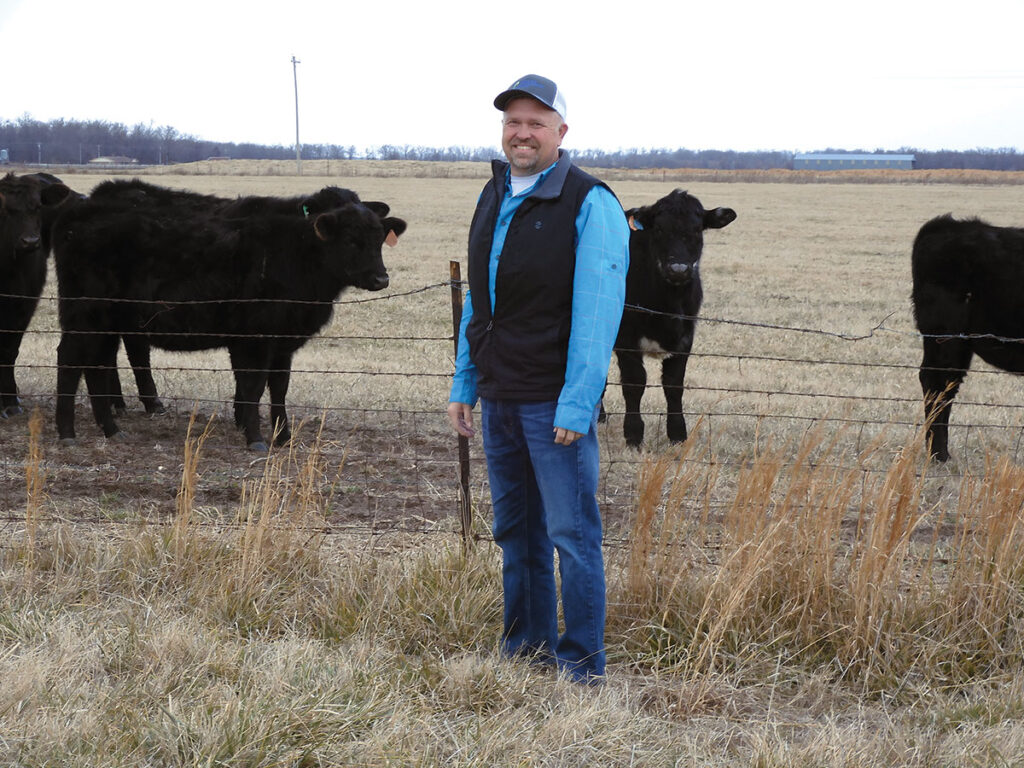
After moving to Oklahoma in the 1930s, the Roberts family continues their family farming operation
This is a story of six generations of the Roberts family which began in the Huntsville area of Arkansas and switched to the Westville area of Oklahoma.
John Roberts, who was born in 1866 in Metalton, Mo., eventually owned a sawmill near Huntsville. In 1903, he “got into it” with a doctor he owed money to. Though details are sketchy, John shot and killed that doctor and spent time in jail before his trial. However, the jury found him not guilty, and he remained in Huntsville running his sawmill business.
In 1929, his son Ed saw the local bully beating his wife. Ed intervened and beat up the husband, thus beginning a very strong family feud. One day the bully got drunk and told Ed to get a gun and be ready because today he would die. However, things turned out differently and the wife beater died. Ed, too, was found not guilty.
Realizing that staying in the Huntsville area would be problematic. In 1932, Ed sold the family’s 3,000 acres in Madison County and purchased 625 acres of flat land with only 20 acres of woodland. Half of the acreage was in Adair County, Okla., while the other half was across the state line in Washington County, Ark. Ed wanted a new location and fresh start for the family. Realizing the wisdom in his son’s decision, John moved onto the new land as well. The two raised crops, including corn, wheat and milo. The new land had two small hills not suitable for crops which is where they kept their cow herd, beginning with Herefords. The farm also produced vegetables and strawberries and maintained 150 hogs.
By 1951, Ed had constructed a large barn that is still in prime condition and in use today. For the last three years, the Roberts family has hosted a live Nativity scene in the barn with all the proceeds going toward the construction of an orphanage in Kenya. Neighbors donate some of the animals, with a Brahman bull serving as a camel with the hump in the wrong place. The purpose of the orphanage is to remove orphaned girls from village life to a safer one in town. Thus far land has been purchased and a well drilled.
During Ed’s time, one lean-to of the large barn was used as a farrowing house, while the other side was reserved for cows having calving difficulties. They sold grain out of the barn with vegetables and strawberries probably sold locally.
The loft area, 2,000-square feet and 52 square bales high, was originally used for loose hay with the old hay hook remaining as a reminder of years gone by. The ground level is 7,000-square feet, including two lean-tos. The main barn is constructed of beautifully preserved tongue and groove oak, and contains a manger the length of the barn. One of the family stories concerns Ed’s grandson Paul Lee. He was only 7 years old at the time and was instructed to pound nails into the very hard oak. Needless to say, the young boy struggled to get the nails in. Ed would inspect his work and make him pull out any nails that weren’t perfectly positioned. The lesson took because Paul Lee ended up being as particular in everything he did, including on the farm he eventually owned. An important change came when Paul switched from crops to Herefords and later Limousins.

“Paul was more businessman than farmer,” said great grandson Eddie, who is also the current farm owner. “Through the years, Paul acquired various businesses, including a movie theater, a feed store and 32 rental houses. He also sold mobile homes.”
Paul was very civic-minded and, according to Eddie, more like a politician than a rancher. Various people managed most of businesses though Paul did manage the farm with his father and son, Paul Lee, doing most of the work. Paul was the first to start a family tradition of being firemen. Paul was a fireman for 20 years, while his brother Troy served for 30. Paul Lee also served for 20 years, with Eddie having served 26 years so far, six as assistant fire chief and nine as chief.
Paul was a significant influence in Eddie’s life, unlike his father and grandfather, because he was always calm. One day when Eddie was about 20 years old, he was putting hay in a new tin barn. Grandpa Paul told him to quit riding the tractor clutch because he was going too fast and was going to damage the new barn.
“Of course, I didn’t listen and soon put two holes in the barn,” Eddie said. “I went to my father, who told me I needed to tell my grandpa. Grandpa was working in the field. He saw how upset I was and came to talk to me. When I told him what happened, he calmly explained he had three hours to think of what he was going to do to me. Needless to say, those were three terrible hours. When time was up, he told me that he was going to leave those two holes rather than fix them so every time I saw them, I would remember how disappointed he was in me. He also said I would remember this after he was long gone and he was right. From that one incident I learned to be calm, to think ahead and to pay attention.”
The women of the family are also strong and independent. In the early 1960s, during the civil rights and women’s rights era, Eddie’s maternal grandfather Leland Morris did not want Eddie’s mother Wanda to go to college. That didn’t seem to mean much because both Leland’s wife Wanda and Eddie’s mom Iva Carol attended college together. Both became teachers, with Wanda teaching reading and Iva Carol teaching physics, trigonometry and biology when men almost universally dominated those areas. Eddie’s wife Amy has the same strength. Amy suffered serious physical difficulties and was confined to a scooter for four years. Following the tradition of the strong women before her, she teaches rehab classes two nights a week as a way of helping others the way she was helped. She also helps out on the farm when and where she can.
“I’m a lucky man,” Eddie explained. “She’s a great farm wife and cooks like crazy.”
Currently, the farm runs 220 heavily Angus-influenced females bred by eight bulls, Angus and a few Hereford for the production of black baldies. Spring and fall calves are weaned at 6 months and fed out until they weigh 700 to 800 pounds when they are sold in Benton County or Fort Smith. Additionally, some heifers are sold off the farm as breeding stock. The farm produces an abundance of hay with the family custom baling as well. Most of the hay goes to the cattle, though 300 large bales a year are sold locally.
Family traditions are holding strong. Eddie teaches history at Westville High School, where he was a coach for baseball and football for several years. He and Amy have a 19-year-old son named Jacob and daughter Amber who is married to Bairon. In 2020, both children purchased a farm, making both Eddie and Amy proud of what their kids have accomplished at such a young age.
“The farm is large enough and my goal is to turn it over to our children,” Eddie said. “I always want to leave things better than I found them, which I believe I did with the fire department and hope to do with the farm by continually improving the infrastructure. Right now, I’m focusing on fences and buildings.”






